-
1 of 253523 objects
The Court of Fath Ali Shah at the Nowrooz Salaam Ceremony. c. 1830
Linen; pencil underdrawing with bodycolour and gold paint | RCIN 1005133
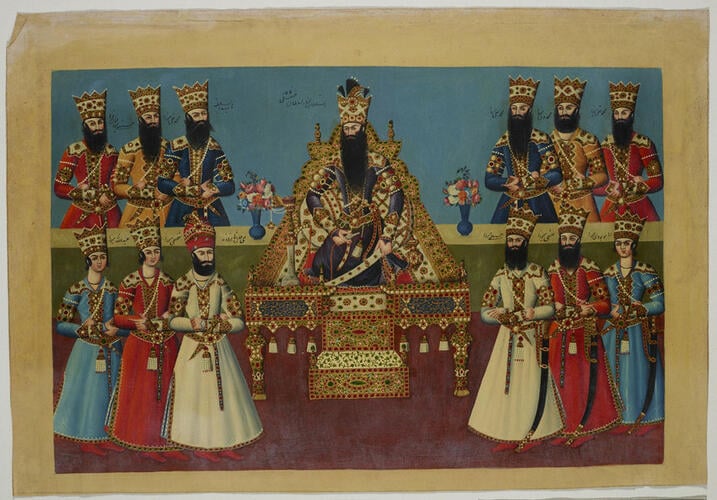
Master: The Court of Fath Ali Shah at the Nowrooz Salaam Ceremony. Item: The Shah seated in state upon his throne, surrounded by the elder princes c. 1830
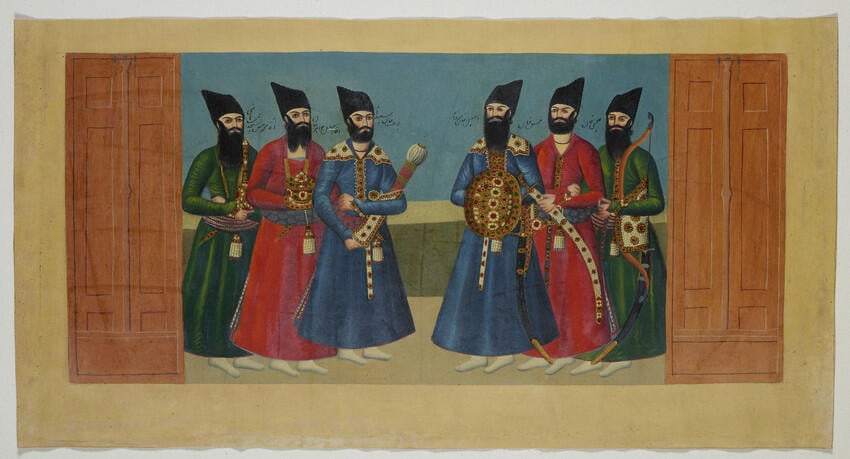
Master: The Court of Fath Ali Shah at the Nowrooz Salaam Ceremony. Item: The Junior princes standing below the steps of the throne c. 1830
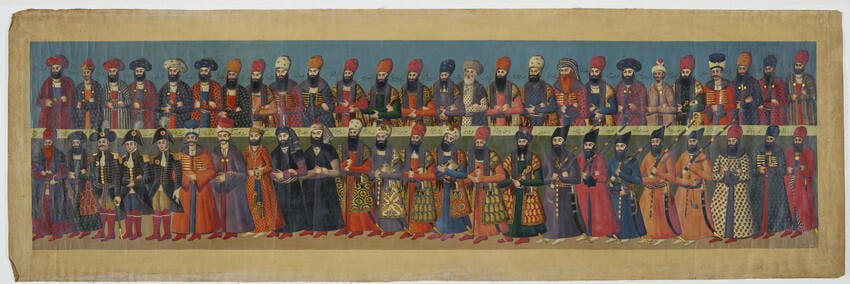
Master: The Court of Fath Ali Shah at the Nowrooz Salaam Ceremony. Item: Nobles and officials attending the audience of Fat′h Ali Shah, looking left c. 1830
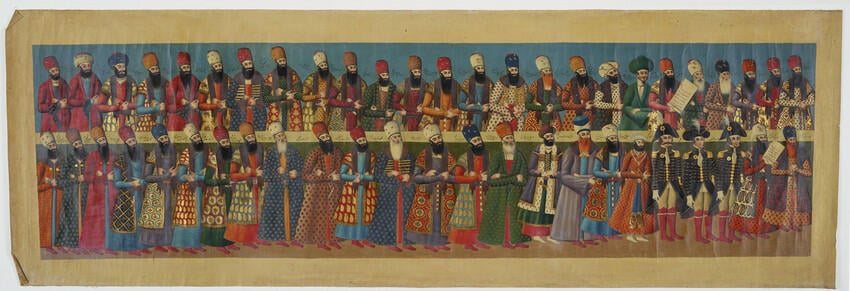
Master: The Court of Fath Ali Shah at the Nowrooz Salaam Ceremony. Item: Nobles and officials attending the audience of Fat′h Ali Shah, looking right c. 1830
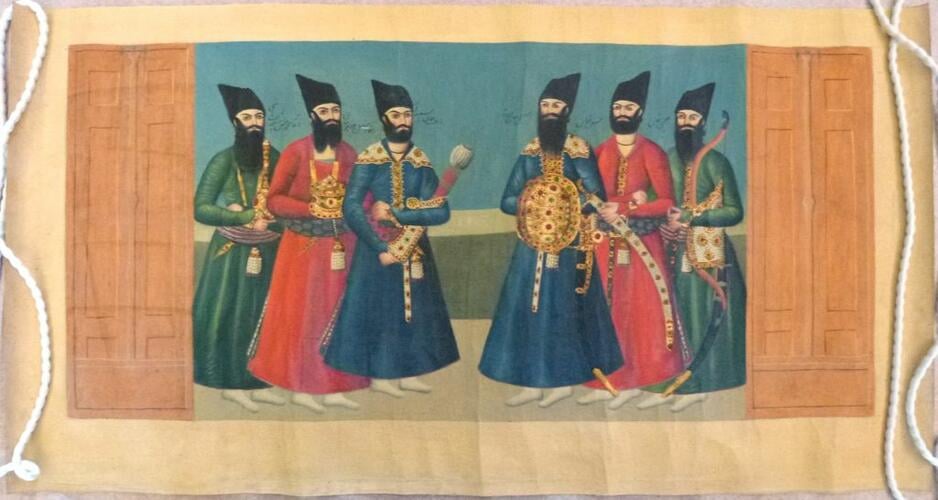
Master: The Court of Fath Ali Shah at the Nowrooz Salaam Ceremony. Item: The Junior princes standing below the steps of the throne c. 1830





-
Reduced copies of a group of life size murals which once covered three walls of the reception hall in the Negaristan Palace outside Tehran. Commissioned by the King of Persia, Fath Ali Shah (1722-1834), the murals were completed in 1812-13 by a team working under the supervision of the principal court artist Abdullah Khan and portray an imaginary New Year's reception at the Persian court.
Fath Ali Shah adopted the Persian title Shahanshah ('King of Kings') and his reign is noted for its elaborate court protocol, pomp and opulence. The mural is a display of Persian royal glory with nobles and representatives of world rulers submitting to the Persian king, and it is possible that copies such as this were intended as propagandist tools for diplomatic distribution.
Piece 1 depicts Fath Ali Shah enthroned with twelve of his sons standing alongside him. Fath Ali Shah kneels on a large, jewel encrusted throne with a water pipe in hand and a sword resting across his lap.
Piece 2 depicts the Shah's attendants who would have stood below the steps of the throne carrying the royal insignia (the jewel-studded sword, shield of state, bow and arrows, a flagon and a covered dish).
Pieces 3 and 4 show two rows of nobles and court officials as well as foreign envoys who were received at the Persian court on various occasions in the early nineteenth century. Placed according to rank, they all stand with their hands crossed, turned towards the Shah. Amongst them are the British envoys John Malcolm, Hartford Jones and Gore Ouseley; the French General Gardane with Mssrs Jaubert and Jouanin; and ambassadors from Russia, the Ottoman Empire and Sind.
As in the original mural, all of the 118 figures in this undated copy are identified in Persian inscriptions. Two of the chief courtiers, Mirza Reza Quli and Mirza Bozorg, hold scrolls bearing further inscriptions. The artist of the original mural, Abdullah Khan, and the architect of the Negaristan Palace, Aqa Jani, stand at the top far left.
As part of the Nowrooz ceremony the Shah presented each of his chief courtiers with a brocade coat and a shawl, which they can be seen wearing in the paintings.
This group of paintings entered the Royal Collection in January 1837 when it was presented to William IV by Sir John Campbell. Campbell had been a British envoy in Persia from the mid-1820s until 1835 and on the death of Fath Ali Shah had played an effective role in securing the throne for the shah's grandson, Muhammad Mirza, by funding the prince's troops.In his letter to General Sir Herbert Taylor (the King's private secretary) which accompanied the paintings, Campbell states that "the walls of the palace are now becoming so defaced from neglect, I doubt whether it will be possible hereafter to make a correct copy of the painting."
The original murals no longer survive but a full-scale copy was made in Tehran in 1904.Provenance
Presented to William IV by Sir John Campbell, 5 January 1837
-
Medium and techniques
Linen; pencil underdrawing with bodycolour and gold paint
Category
Object type(s)